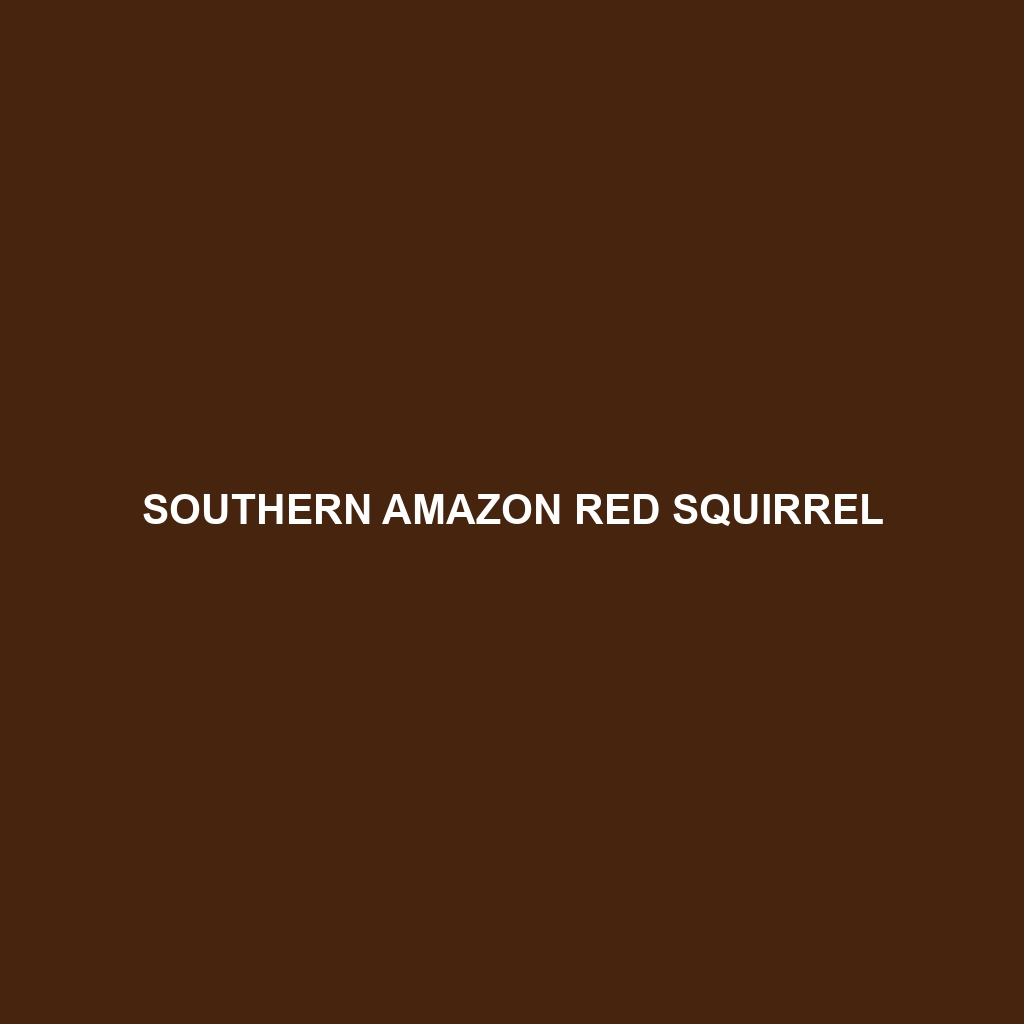Southern Amazon Red Squirrel
Common Name: Southern Amazon Red Squirrel
Scientific Name:
Habitat
The Southern Amazon Red Squirrel is primarily found in the humid tropical rainforests of the Amazon Basin. This species thrives in regions of southern Brazil, eastern Peru, and northern Bolivia, where dense foliage and abundant tree cover provide a suitable environment for their arboreal lifestyle. They prefer primary forests but can also be spotted in secondary growth and areas near water bodies such as rivers and streams.
Physical Characteristics
The Southern Amazon Red Squirrel is medium-sized, typically reaching a length of 25-35 cm (10-14 inches) including its bushy tail, which can be as long as the body. Their fur is characterized by a rich reddish-brown color, with lighter underparts and distinctive tufted ears. Their agile limbs and sharp claws are ideally adapted for navigating the high branches of their forest habitat.
Behavior
The Southern Amazon Red Squirrel exhibits diurnal behavior, primarily being active during the day. They are known for their playful antics, often chasing each other through the trees. These squirrels are territorial and communicate through a series of vocalizations and tail signals. They are remarkable climbers and display remarkable agility in leaping from branch to branch.
Diet
The diet of the Southern Amazon Red Squirrel is primarily composed of seeds, nuts, fruits, and berries. They play a crucial role in their ecosystem by aiding in seed dispersal, which contributes to forest regeneration. During the seasons when food is scarce, these squirrels may also consume fungi and tree bark.
Reproduction
Southern Amazon Red Squirrels typically breed once or twice a year, with the breeding season usually occurring between December and February. After a gestation period of approximately 44 days, females give birth to a litter of 2-5 young. The offspring remain with their mother for several months before becoming independent. Maternal care is critical, as the mother teaches her young essential survival skills.
Conservation Status
According to the International Union for Conservation of Nature (IUCN), the Southern Amazon Red Squirrel is currently classified as “Least Concern”. However, habitat loss due to deforestation poses a potential threat, and ongoing conservation efforts are necessary to monitor their populations.
Interesting Facts
– The Southern Amazon Red Squirrel is known for its playful nature and acrobatic skills, making it a fascinating subject for wildlife watchers.
– Their bushy tails serve not only for balance but also to help them stay warm during cooler nights in the rainforest.
Role in Ecosystem
As a vital part of the rainforest ecosystem, the Southern Amazon Red Squirrel contributes significantly to forest health through seed dispersal. By consuming various fruits and nuts, they help facilitate the growth of new plants and trees, promoting biodiversity. Additionally, they serve as a food source for larger predators, thus playing an important role in the food web of their habitat.
